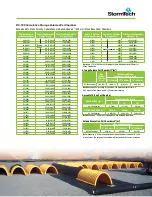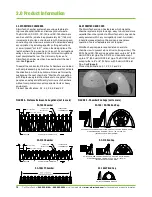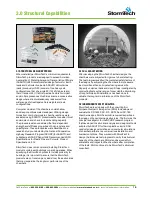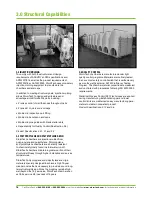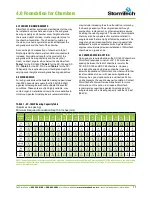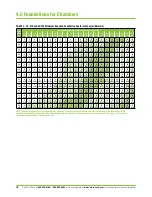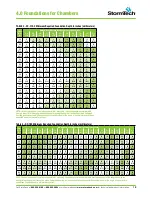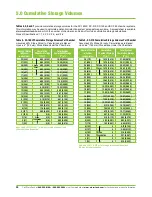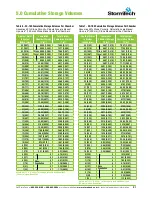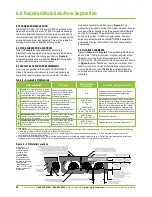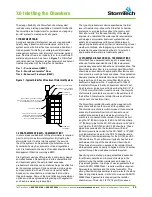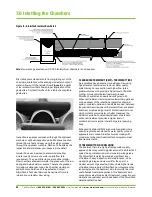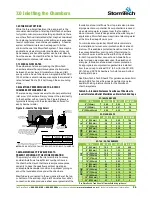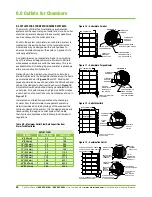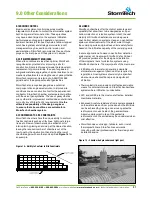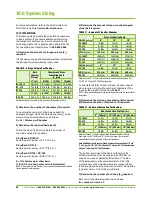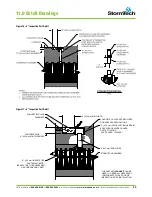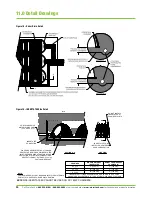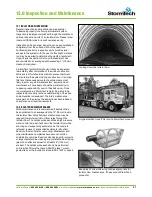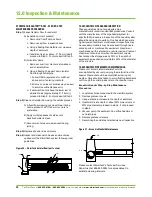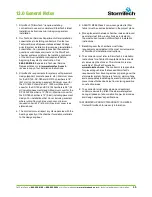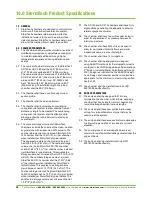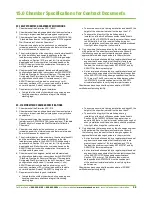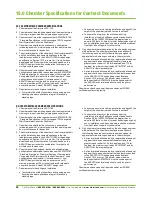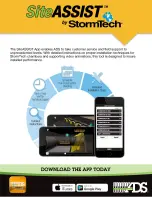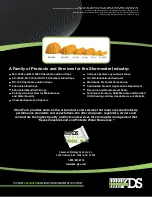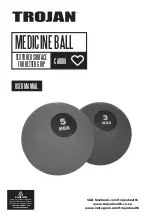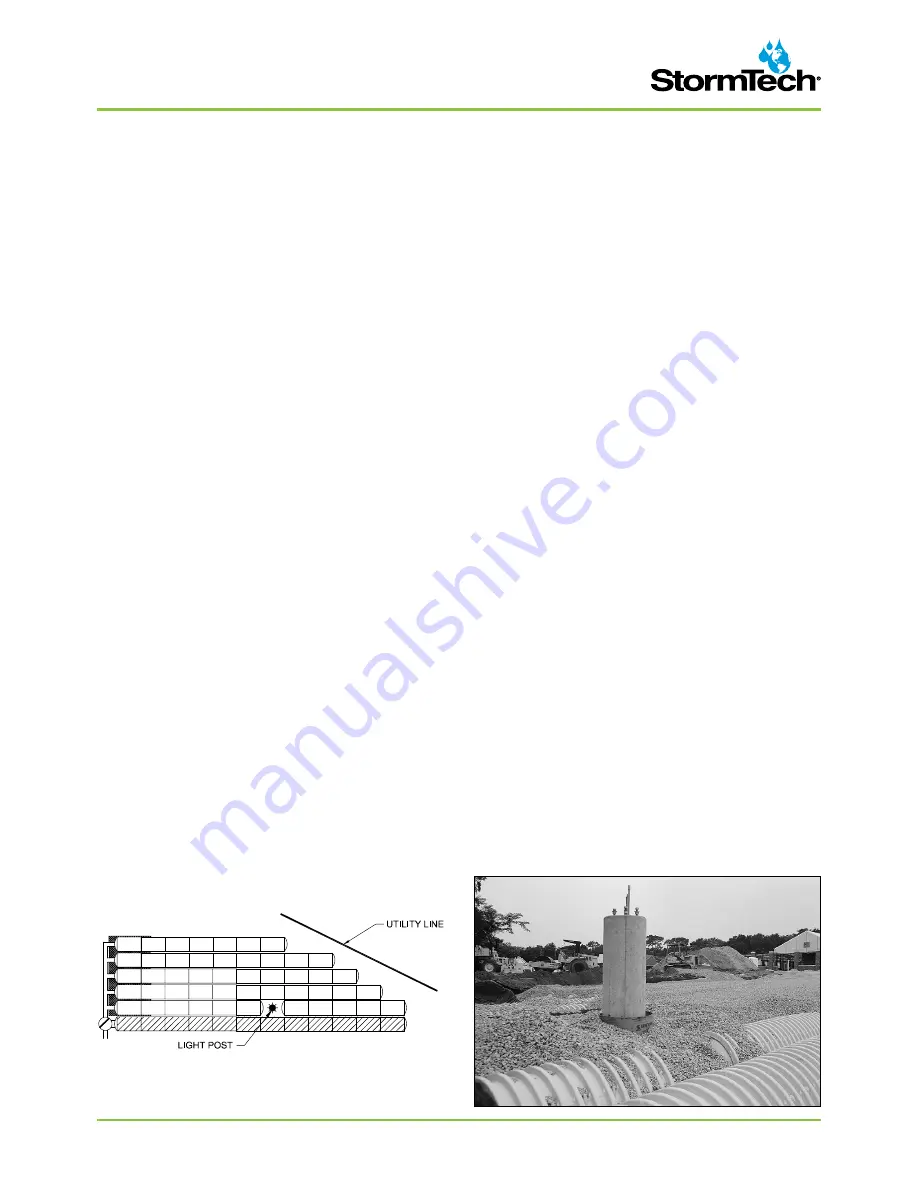
Call StormTech at
860.529.8188
or
888.892.2694
or visit our website at
www.stormtech.com
for technical and product information.
27
9.0 Other Considerations
9.1 EROSION CONTROL
Erosion and sediment control measures must be
integrated into the plan to protect the stormwater system
both during and after construction. These practices
may have a direct impact on the system’s infiltration
performance and longevity. Vegetation, temporary
sediment barriers (silt fences, hay bales, fabric-wrapped
catch basin grates), and strategic stormwater runoff
management may be used to control erosion and
sedimentation. StormTech recommends the use of pipe
plugs on the inlet pipe until the system is in service.
9.2 SITE IMPROVEMENT TECHNIQUES
When site conditions are less than optimal, StormTech
recognizes many methods for improving a site for
construction. Some techniques include the removal and
replacement of poor materials, the use of engineered
subgrade materials, aggregates, chemical treatment, and
mechanical treatments including the use of geosynthetics.
StormTech recommends referring to AASHTO M 288
guidelines for the appropriate use of geotextiles.
StormTech also recognizes geogrid as a potential
component of an engineered solution to improve site
conditions or as a construction tool for the experienced
contractor. StormTech chamber systems are compatible
with the use of geosynthetics. The use of geosynthetics
or any other site improvement method does not eliminate
or modify any of StormTech’s requirements.
It is the
ultimate responsibility of the design engineer
to ensure that site conditions are suitable for a
StormTech chamber system.
9.3 CONFORMING TO SITE CONSTRAINTS
StormTech chambers have the unique ability to conform
to site constraints such as utility lines, light posts, large
trees, etc. Rows of chambers can be ended short or
interrupted by placing an end cap at the desired location,
leaving the required number of chambers out of the
row to get by the obstruction, then starting the row of
chambers again with another end cap. See
Figure 14
for
an example.
9.4 LINERS
StormTech chambers offer the distinct advantage and
versatility that allow them to be designed as an open
bottom detention or retention system. In fact, the vast
majority of StormTech installations and designs are
open bottom detention systems. Using an open bottom
system enables treatment of the storm water through
the underlying soils and provides a volume safety factor
based on the infiltrative capacity of the underlying soils.
In some applications, however, open bottom detention
systems may not be allowed. StormTech’s Tech Sheet
#2 provides guidance for the design and installation
of thermoplastic liners for detention systems using
StormTech chambers. The major points of the memo are:
• Infiltration of stormwater is generally a desirable
stormwater management practice, often required by
regulations. Lined systems should only be specified
where unique site conditions preclude significant
infiltration.
• Thermoplastic liners provide cost effective and viable
means to contain stormwater in StormTech subsurface
systems where infiltration is undesirable.
• PVC and LLDPE are the most cost effective, installed
membrane materials.
•
enhanced puncture resistance from angular aggregate
on the water side and from protrusions on the soil side
can be achieved by placing a non-woven geotextile
reinforcement on each side of the geomembrane.
A sand underlayment in lieu of the geotextile
reinforcement on the soil side may be considered when
cost effective.
• StormTech does not design, fabricate, sell or install
thermoplastic liners. StormTech recommends
consulting with liner professionals for final design and
installation advice.
Figure 14 – Ability to Conform to Site Constraints
Figure 15 – Chamber bed placed around light post.
Summary of Contents for StormTech DC-780
Page 2: ...An company TOOL 2 0 DESIGN ...
Page 39: ......

